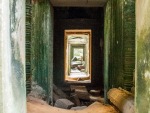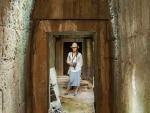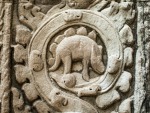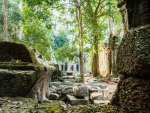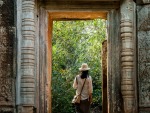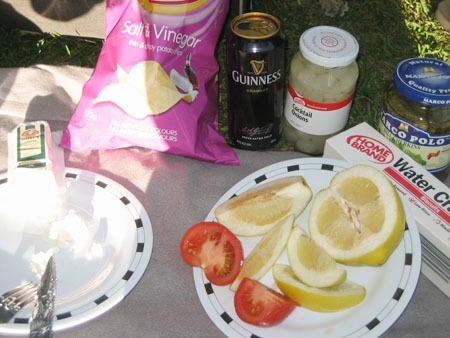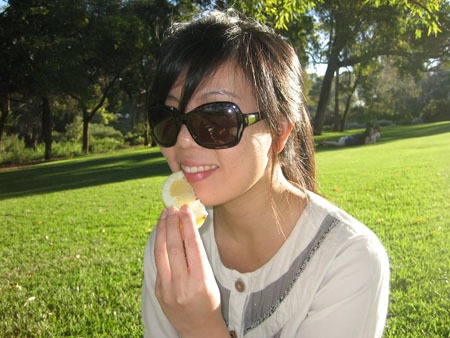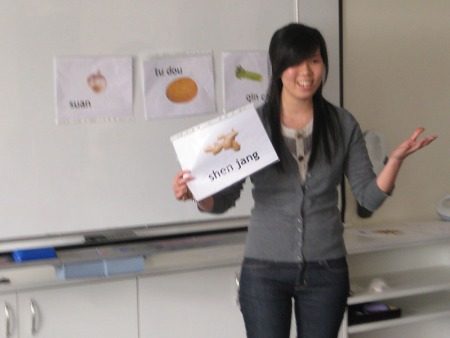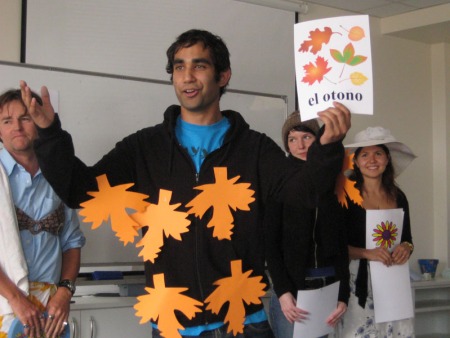I was immediately interested when I heard of Flavor Tripping Parties on the radio by chance. Further searching the web of the parties, which led to the crucial miracle fruit, confirmed what I heard and now I had to try it. But how exactly was I going to acquire a miracle fruit berry, especially since living in Australia?
I resorted to trusty eBay which immediately resulted in plenty of hits, but these seller were all overseas and with many specifically stating ‘will not post to Australia’. However, there was one seller selling five portions of miracle fruit granules at about $17 AUD including postage (from reading; a single berry goes for about $2 US in the states). I immediately purchased and now it was just a matter of waiting for it to arrive.
It arrived concealed as a letter with a small quantity of miracle fruit granule hidden inside. Before arranging the picnic, I tried a small sample with a lemon as a tester. It seemed to work. Next I arranged a surprise picnic with Sonya, but didn’t mention the miracle fruit, which caused her to be quite confused. Now it was time to go shopping, I briefly researched some foods that worked well and others I thought would work well, on the list were:
- lemons
- tomatoes
- cocktail onions
- gherkins
- salt and vinegar chips
- goat’s cheese
- Guinness (a dark beer)
- tequila
I packed up the picnic set, and then we headed to Perth’s Kings Park. As we walked towards an ideal spot I briefed Sonya on Flavor Tripping, she wasn’t quite sure about it yet. Luckily I brought a print out of the miracle fruit Wikipedia page, which once reading the effects of turning sour foods sweet, was all excited to try it.
We both took a small portion of the granules and swirled it around our tongues. Sonya made the mistake of swallowing a little too early. After a minute or so and some more granules we began food tastings.
We started with lemons to confirm everything was working, and it was, as the lemons tasted like candied lemons dipped in sugar. We moved on to cocktail onions and gherkins, which were difficult to decipher as the cocktail onions now tasted like sweet brown pickled onions and the gherkins the sweeter bread-and-butter pickles variety. What we then realised was that we should have done a control tasting before consumption of the miracle fruit.
The tomato was an interesting choice that turned out well. Chosen due to its natural acidic taste, consumed after miracle fruit, the tomato could justify its botanical classification of being a fruit as it turned extremely sweet. From fruits and vegetables we moved to the salt and vinegar chips. I am not sure why no other flavour tripping parties had any mention of these, as I thought it was a much better idea than drinking a shot of vinegar. Sonya, a big fan of salt and vinegar chips in their unmodified form, wasn’t happy when the vinegar was missing, complaining they tasted like the original variety. I thought they tasted like salted sweet potato chips.
Having consumed a large amount of foods, it was time to crack open the can of Guinness. This one was one of my favs. Guinness tasted pretty much like lolly water, and Sonya, not usually a fan of Guinness found it very easy to drink. Our final food was goat’s cheese which I had read tasted like cheesecake. Sonya thought it did, describing it as a creamy cheesecake; I wasn’t too sure, not liking the taste.
Finally we had a little bit of tequila. This one was also an interesting one, it did taste nicer, which was a surreal feeling given it still had the strong alcoholic smell and burned on the way down. The fact that we were drinking tequila in broad daylight in a public park probably also helped on the surreal feelings.
The miracle fruit experiment was an interesting experience both enjoyed by Sonya and I. It was also an interesting experience having a sour themed picnic, with passers by wondering why we had a plate of lemons.
I wouldn’t mind trying to grow a miracle fruit plant and hosting a flavour tripping party with real berries. From what I have read though it is at least 2-3 years for a plant to develop fruit from seedlings, and a 25% rate of seed germination, well, best start early then.
-31.9600578
115.84365939999998








































































































